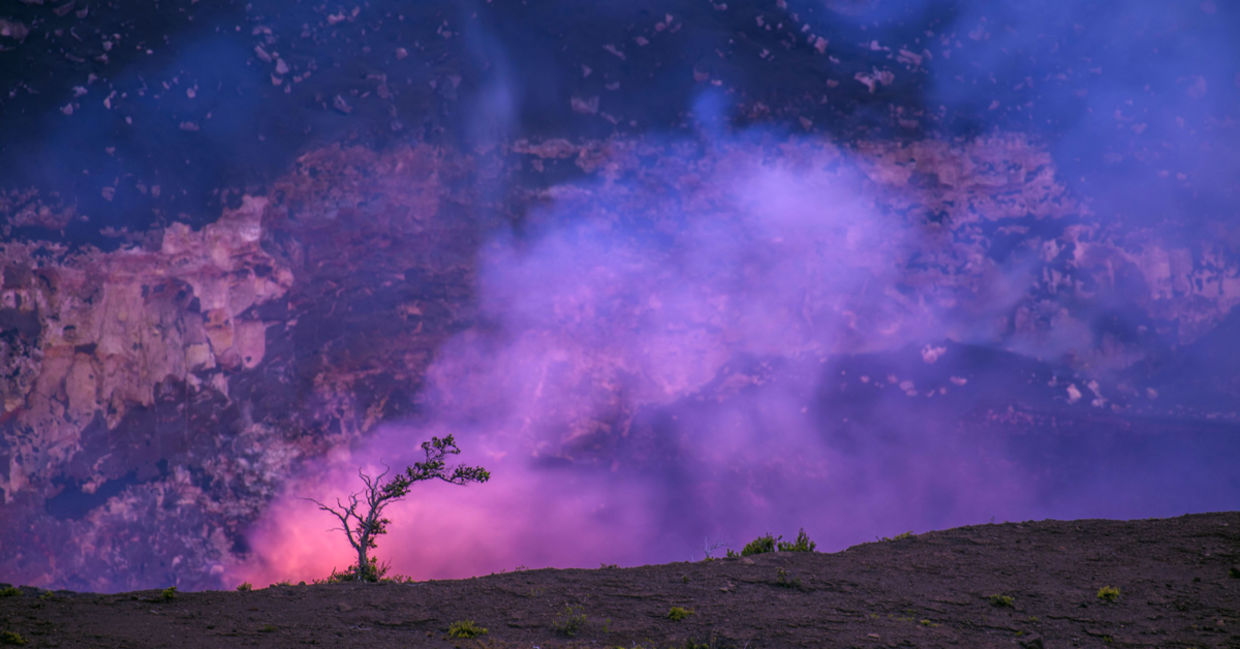Musical Dynamics May Help Predict Volcanic Eruptions
Volcano ‘tunes’ may help scientists understand seismic activity.

(Gary Gilardi / Shutterstock.com)
The Hawaiian Islands contain beautiful beaches and lush colorful foliage. Part of the iconic landscape of the islands are the volcanoes that actually formed them and one of these volcanoes is Kilauea that is found on Hawaii Island.
This immensely popular volcano was in a state of eruption from 1983 to 2018, according to the travel site The Hawaiian Islands. Kilauea’s lava sloshed around over these ten years before finally erupting in 2018. The volcano actually emitted strange musical sounds during this time period that may help determine why it erupted.
Researchers from the University of Oregon studied these strange “tunes” to find out if this music can be used to help predict volcanic future eruptions, according to Science Alert. The study was published in the June 1, 2022 issue of Science Advances.
Volcanic Music
Before the big belch in 2018, Kilauea’s 10-year slow eruption emitted a near persistent flow of lava in the Halema’uma’u crater. The lava is believed to have been constantly pushed up in an underground chamber and stayed consistent until the big eruption which quieted the volcano for over two years.
Now the research into Kilauea is trying to determine how to interpret these musical dynamics. “People could stand near the lava lake rim and visit the lava flows coming out. But under the surface, there was lots more going on,” earth scientist Leif Karlstrom from the University of Oregon said in a university news release.
The researchers, according to the university, analyzed the data that was collected from the Hawaiian Volcano Observatory from 2008 to 2018 from an array of sensors that were positioned around the rim to record vibrations.
“Once something physically disturbs the magma chamber or the lava lake, it sloshes around, and we can measure that with seismometers,” Josh Crozier, a former UO doctoral student now at the US Geological Survey’s California Volcano Observatory said.
“Over this decade-long eruption, we detected tens of thousands of such events. We're combining this data with a physics-based model of processes that are creating these signals.”
The seismic signals had resonance based on the shape of the magma, like tapping on a bottle, and allowed scientists to understand what was going on inside the volcano without actually being there.
What’s Next?
While it is too early in the process to be able to forecast volcanic eruptions, the scientists hope that it can help them make more informed interpretations of volcanic seismic activity.
“That’s the next step, identifying implications of these variations we found for dynamics and human hazards of the volcano,” Karlstrom stressed.
The music of the lava could help determine when evacuations are necessary and could save people’s lives. And that would certainly be music to the ears of people around the world who live near active volcanoes.
YOU MIGHT ALSO LIKE:
Philippine City Gets Creative With Volcanic Ash
Iceland's Year-Round Greenhouses Are Powered by Volcanoes
New Tech Can Make Geothermal Energy as Common as Solar Power







